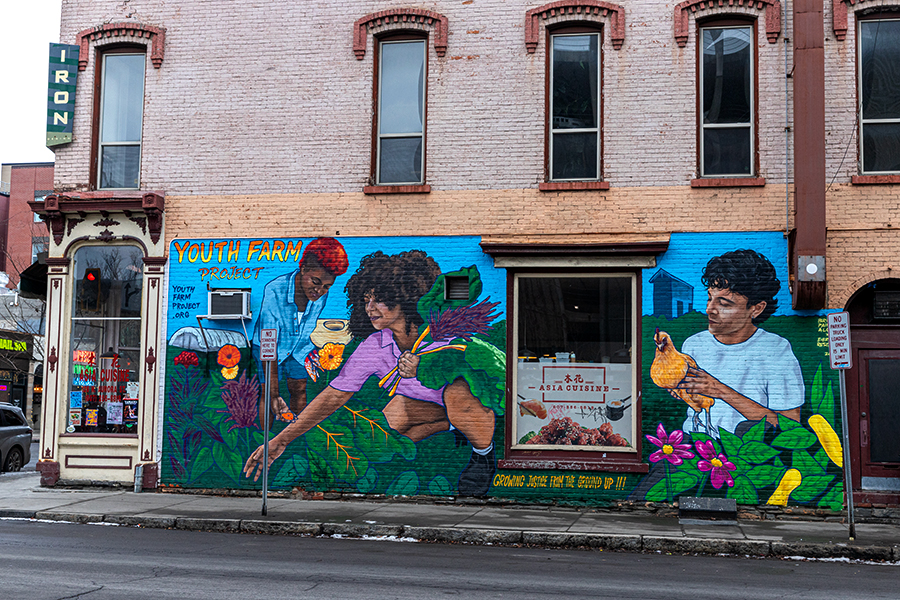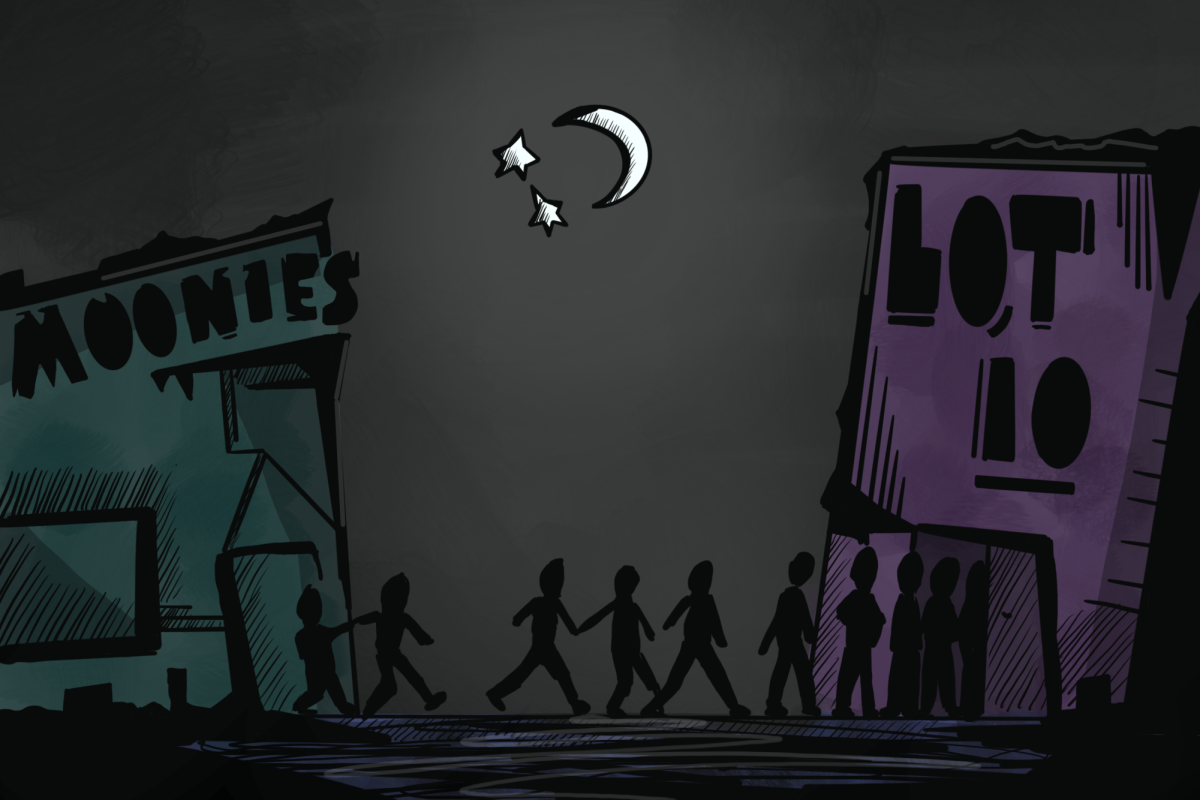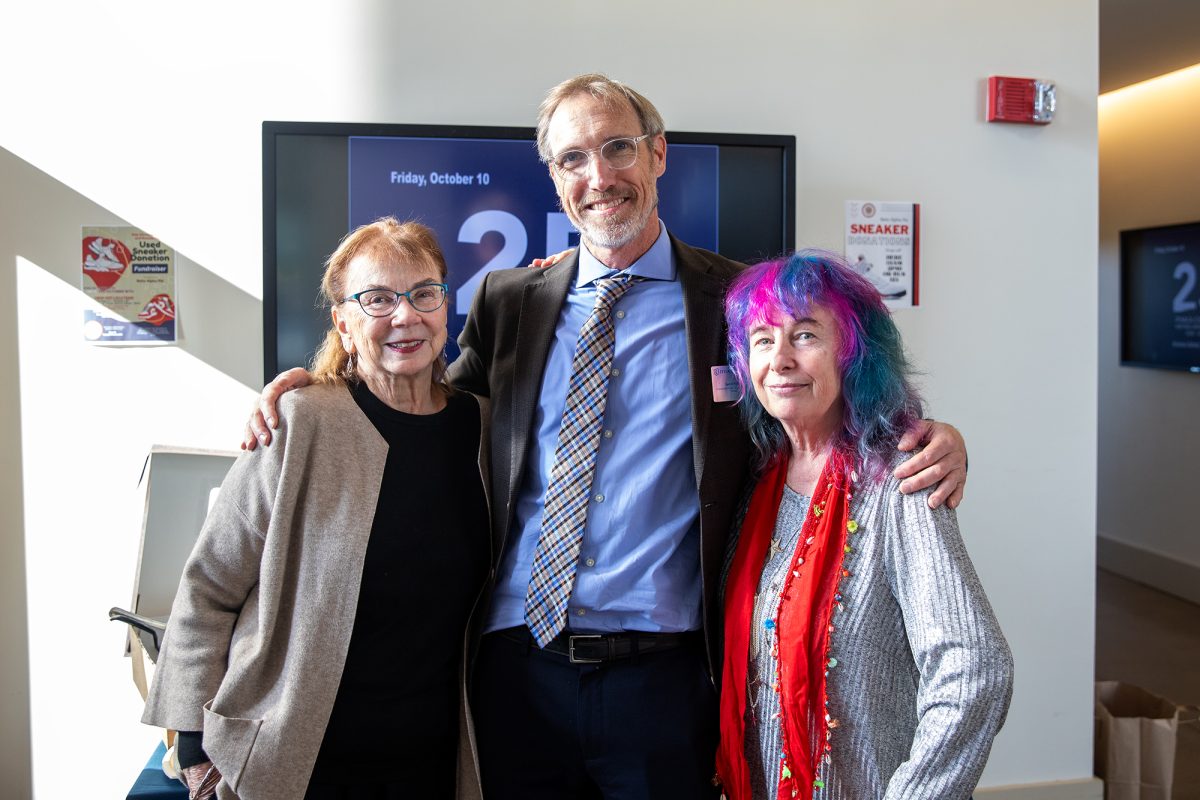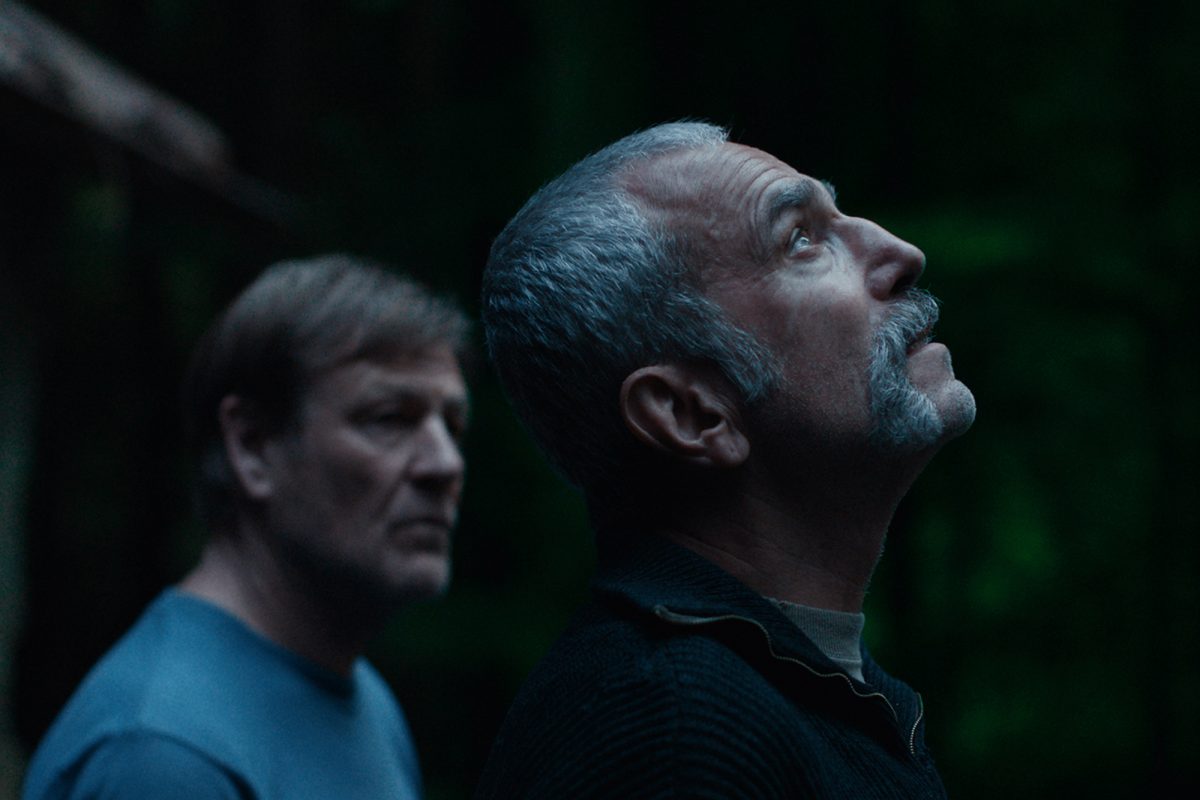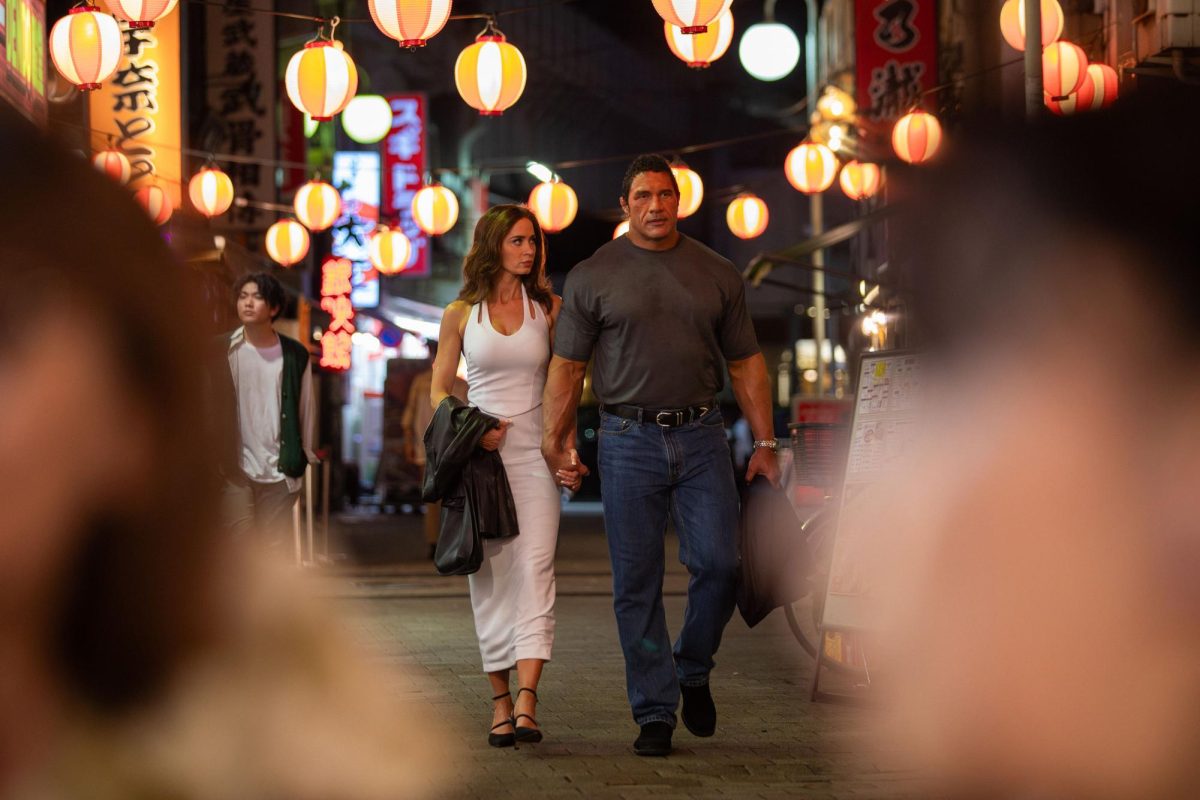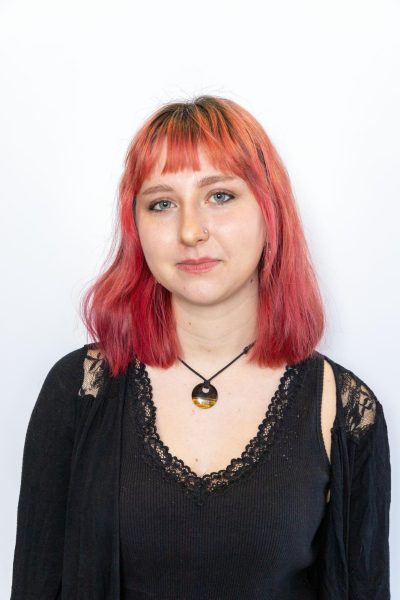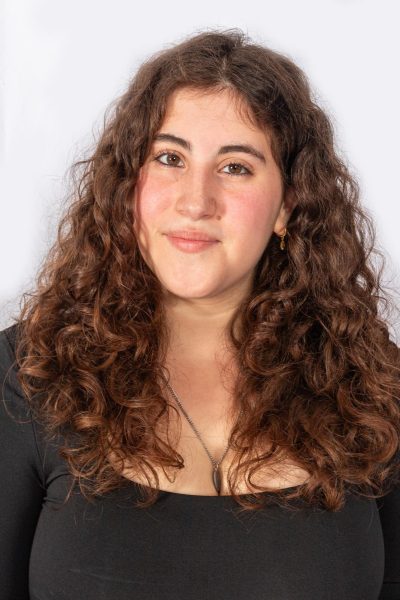SMU DataArts, the national center for arts research, ranked Ithaca No. 2 for most arts vibrant medium sized communities in 2024. The downtown art scene in Ithaca flourished in public support of the arts in 2024, leading to this achievement.
Jennifer Benoit-Bryan, director of SMU DataArts, said researchers collect their own data and combine it with publicly available data about the financial and operational health of arts and culture organizations within a community. The Arts Vibrancy Index measures the kind of support communities give the arts, including how many awards or grants are distributed, revenues in ticket sales and contributions, what gets paid out to employees and total expenses amidst other scores.
“Our indicator has 13 different measures,” Benoit-Bryan said. “We roll all of those scores up into an overall arts vibrancy metric and we really think about who’s providing arts and culture content in a community, like the artists, the employees, [and] the arts and cultural organizations themselves.”
Linda Luciano, property manager of South Hill Business Campus, built the Gallery at South Hill and Artist Alley, which has 54 studios and a year-long 20-person waitlist for new rentals.
Luciano said she gets a wide variety of artists renting spaces, from painters to puppet makers.
“Some people do this and this is how they make their living and some people just [have] a hobby and everything in between,” Luciano said.
Despite adding nine more studios to Artist Alley in 2024, Luciano said she would love to add even more if there was the space. About five years ago, she had six studios built, all of which were rented before they were put on display at the open house she had planned to market them at.
“I went to the architect and I said ‘hey, you know I gotta have some more we got this open house, what am I gonna sell?” Luciano said. “So I put tape on the floor where the new ones would be, had the open house, and I rented all of those. They weren’t built yet, it was just tape on the floor.”
Michael Sampson is the curator of the Gallery at South Hill and also runs Ithaca Gallery Nights, which showcases numerous artists in Ithaca on the first Friday of every month. Ithaca Gallery Night is 25 years old and within the past year has gained 10 new venues. Sampson said that on average in 2024 there were 20 artist participants per month in the Friday gallery nights.
“As the program grows I think it’s bringing in a lot more people,” Sampson said. “So I’m noticing more attendance at Ithaca Gallery Night due to the fact that there’s more participation.”
While 2024 was a bustling year for art openings and a growing artist audience in Ithaca, there is one group of people that were largely missed: students.
Ed Brothers, president of the board of directors for State of the Art Gallery in Ithaca, along with Sampson and Luciano, expressed wanting to see more involvement from college communities.
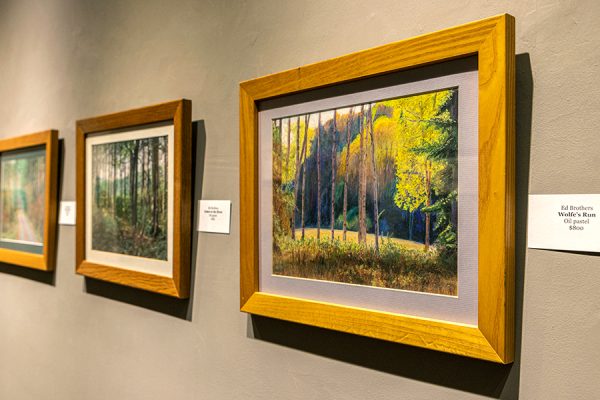
“We try to get an intern every year, which is usually from IC or Cornell,” Brothers said. “We love when students come in.”
Vincent Joseph, an artist at State of the Art Gallery, said there are some college students who come during gallery nights on Fridays, but not nearly enough. Joseph said that in his experience there has been a divide from college communities in the town as a whole.
“I would say that we have made a pretty good effort trying to engage the college students,” Joseph said. “It hasn’t worked out to the full capacity that it could.”
Sampson said it was one of his goals to increase college student participation and to make sure students knew they were able to participate in Ithaca Gallery Night.
“I think one solution is to have more student exhibitions at Ithaca Gallery Night,” Sampson said. “With the opening of more venues, that’s more of an opportunity for students to exhibit their work.”
In 2024, Community Arts Partnership ArtSpace Gallery hosted two current Ithaca College students in its gallery, senior art major Safara Kalei Vaché and Jack Hassett ’24. Vaché said it was a learning experience as her first solo show.
“This was the first time I needed to get measurements of all of my pieces and really document them,” Vaché said. “It was something that was going to be much more public and honestly it was just really exciting.”
CAP ArtSpace is the statewide community regrant partner for the New York State Council of the Arts. Megan Barber, the executive director of CAP, said their job is to redistribute the grants they receive for Ithaca from the statewide community regrant program to every corner of their county.
“So this year we have $200,000 to give out to artists and arts groups for local arts programming for artists,” Barber said. “We have an artist and community grant, and then an arts and education grant. We also have a grant called the strategic opportunity stipend, which supports local artists.”
These are just a sample of the grants they have to give out. Brothers said the primary grant that the State of the Art Gallery receives to help fund events is from CAP, which they have to apply for every year. Barber said the gallery is always looking to increase their funding for the arts, which comes in the form of regrant funding. Regrant funding is when a larger organization distributes smaller grants from funding they receive in order to help direct money to smaller organizations or communities that need it.
“We used to get like $80,000 of regrant funding from the state, and now it’s up to $200,000, so that I feel really excited about,” Barber said.
According to the Arts Vibrancy Index, Benoit-Bryan said public support has been Ithaca’s strong suit.
“I think the place where there was the biggest leap from last year to this year has been in public support and in state arts funding,” Benoit-Bryan said. “But also in federal arts funding, … which tells the nonprofit organizations in Ithaca are really doing a great job of … getting those grants funded and it tells me that in the state of New York in particular, that you’ve got some really good public support going out to Ithaca as a community.”
Last year Ithaca placed No. 3 for medium sized communities on the Arts Vibrancy Index. Benoit-Bryan said there often is not a large space between rankings at the very top of the list, and that moving from a rank of three to a rank of two can be a pretty small change. However, she said it was important to be able to celebrate the art vibrancy in communities and that they want the index to provide that.
“We really don’t want this to be used to shame communities,” Benoit-Bryan said. “It is exciting to be able to lift up and celebrate the amazing work that’s happening among arts and culture organizations, and so this has been a way to bring some positive attention to the way that arts and culture lives within communities, and can be an important part of these communities.”
For the next year, Joseph and Sampson share a similar goal in getting more performance-based participation from all different kinds of artists in their respective art events.
“I’m also really really interested for first Friday venues having demonstrations,” Sampson said. “Whether it’s calligraphy, or whether it’s knitting, anything that sort of feeds to the public and the public’s interest in actually seeing artists at work.”
Brothers has lived in Ithaca for 50 years and said the art scene has always been strong, but now he notices more of it.
“As you just walk around on the street, [there’s] more evidence of it because [of the] murals; I mean murals weren’t a thing 20 years ago,” Brothers said. “Now, you turn around and in fact there’s a whole community in Ithaca. … There’s always been a new gallery, they sort of come and go but I think overall, there’s more. They’re accumulating rather than disappearing.”


